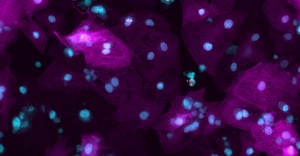TABLE OF CONTENTS
Understanding Gene Delivery and its Challenges
Introduction to Dual-AAV Therapy
Benefits and Advantages of Dual-AAV Therapy
Recent Advancements: Dual AAVs and Hearing Restoration
Exploring Dual-AAV Therapy in Research
Future Implications and Potential Breakthroughs
Understanding Gene Delivery and its Challenges
Gene delivery plays a crucial role in the field of genetic medicine, as it involves the transportation of therapeutic genes into target cells. However, this process faces numerous challenges. One of the primary challenges is the efficient delivery of genes to specific cells or tissues, as different diseases may require different target sites. Additionally, the immune response to gene delivery vectors can limit their effectiveness. Understanding these challenges is essential for developing innovative approaches to gene delivery.
Another challenge lies in the size of the genetic material that needs to be delivered. Some genes, such as those responsible for certain genetic disorders, can be quite large. This makes it difficult to package them into traditional gene delivery vectors, which have limited cargo capacity. Overcoming these challenges is crucial for advancing gene delivery techniques and improving treatment outcomes.
Introduction to Dual-AAV Therapy
Dual adeno-associated virus (AAV) therapy, is a promising approach in the field of gene delivery. It involves the use of two different adeno-associated viruses (AAVs) to deliver therapeutic genes. Each AAV is engineered to carry a specific part of the desired genetic material, and they work together to deliver the complete gene into target cells.
One of the key advantages of dual AAV therapy is its ability to overcome the limitations of traditional gene delivery vectors. By using two AAVs, larger genes can be delivered more efficiently, as the genetic material is divided between the two vectors. This opens up possibilities for treating a wider range of genetic disorders that were previously difficult to target.
Furthermore, dual AAV therapy allows for more precise targeting of specific cells or tissues. Each AAV can be engineered to have different tropisms, meaning they can selectively infect certain cell types. This targeted approach enhances the efficiency and specificity of gene delivery, leading to improved treatment outcomes.
Benefits and Advantages of Dual-AAV Therapy
Dual-AAV therapy offers several benefits and advantages over traditional gene-delivery methods. One of the major advantages is the increased cargo capacity. By using two AAVs, larger genes can be delivered more effectively, expanding the possibilities for gene therapy.
Another benefit is the improved safety profile of dual AAV therapy. Adeno-associated viruses have been extensively studied and are known for their low immunogenicity and low pathogenicity. By using AAV vectors, the risk of immune response and adverse effects is minimized, making dual-AAV therapy a relatively safe option for gene delivery.
Additionally, dual-AAV therapy allows for precise control over gene expression. By using two separate AAVs, each carrying a different part of the gene, the expression of the therapeutic gene can be tightly regulated. This enables fine-tuning of gene expression levels, reducing the risk of off-target effects and optimizing treatment outcomes.
Recent Advancements: Dual AAVs and Hearing Restoration
A recent study published in The Lancet (DOI: 10.1016/S0140-6736(23)02874-X) showcases the transformative potential of dual AAV gene therapy in the realm of hearing restoration for deaf children. The study focuses on the use of AAV1 to deliver the OTOF gene, which is associated with congenital hearing impairment, demonstrating a significant improvement in hearing outcomes. This breakthrough not only underscores the efficacy of dual AAV gene therapy but also highlights its real-world applicability in addressing complex genetic disorders.
Exploring Dual-AAV Therapy in Research
Dual AAV therapy is being actively explored in research settings to investigate its potential applications in various diseases. Researchers are studying its effectiveness in treating genetic disorders, such as muscular dystrophy, cystic fibrosis, and neurodegenerative diseases.
Furthermore, studies are being conducted to improve the delivery efficiency of dual-AAV therapy. This includes optimizing the viral vectors, developing new viral capsids, and enhancing the targeting capabilities of AAVs. These research efforts aim to further improve the efficacy and safety of dual-AAV therapy, paving the way for its widespread use in clinical settings.
Moreover, dual-AAV therapy is also being investigated for its potential in gene-editing techniques, such as CRISPR-Cas9. By utilizing dual AAV vectors, researchers aim to enhance the delivery of gene editing tools and improve the precision of targeted genome modifications.
Overall, the research on dual-AAV therapy is expanding our understanding of gene delivery and its potential applications in various fields of medicine.
Future Implications and Potential Breakthroughs
The development of dual AAV therapy has opened up new possibilities for gene delivery and has the potential to revolutionize the field of genetic medicine. As research continues to advance, we can expect several future implications and potential breakthroughs.
One potential breakthrough is the development of more efficient and targeted gene therapies. By combining different AAV vectors and optimizing their properties, researchers aim to improve the delivery efficiency, expand the cargo capacity, and enhance the targeting capabilities of AAV therapy. This could lead to the development of effective treatments for a wide range of genetic disorders.
Another potential breakthrough lies in the integration of dual-AAV therapy with other advanced technologies, such as gene-editing techniques. By combining dual AAV vectors with gene-editing tools like CRISPR-Cas9, researchers aim to achieve precise and targeted modifications of the genome, opening up possibilities for personalized medicine and the treatment of previously incurable diseases.
In conclusion, dual-AAV therapy holds great promise in revolutionizing gene delivery and advancing the field of genetic medicine. With ongoing research and technological advancements, we can look forward to exciting breakthroughs and improved treatment options in the near future.


